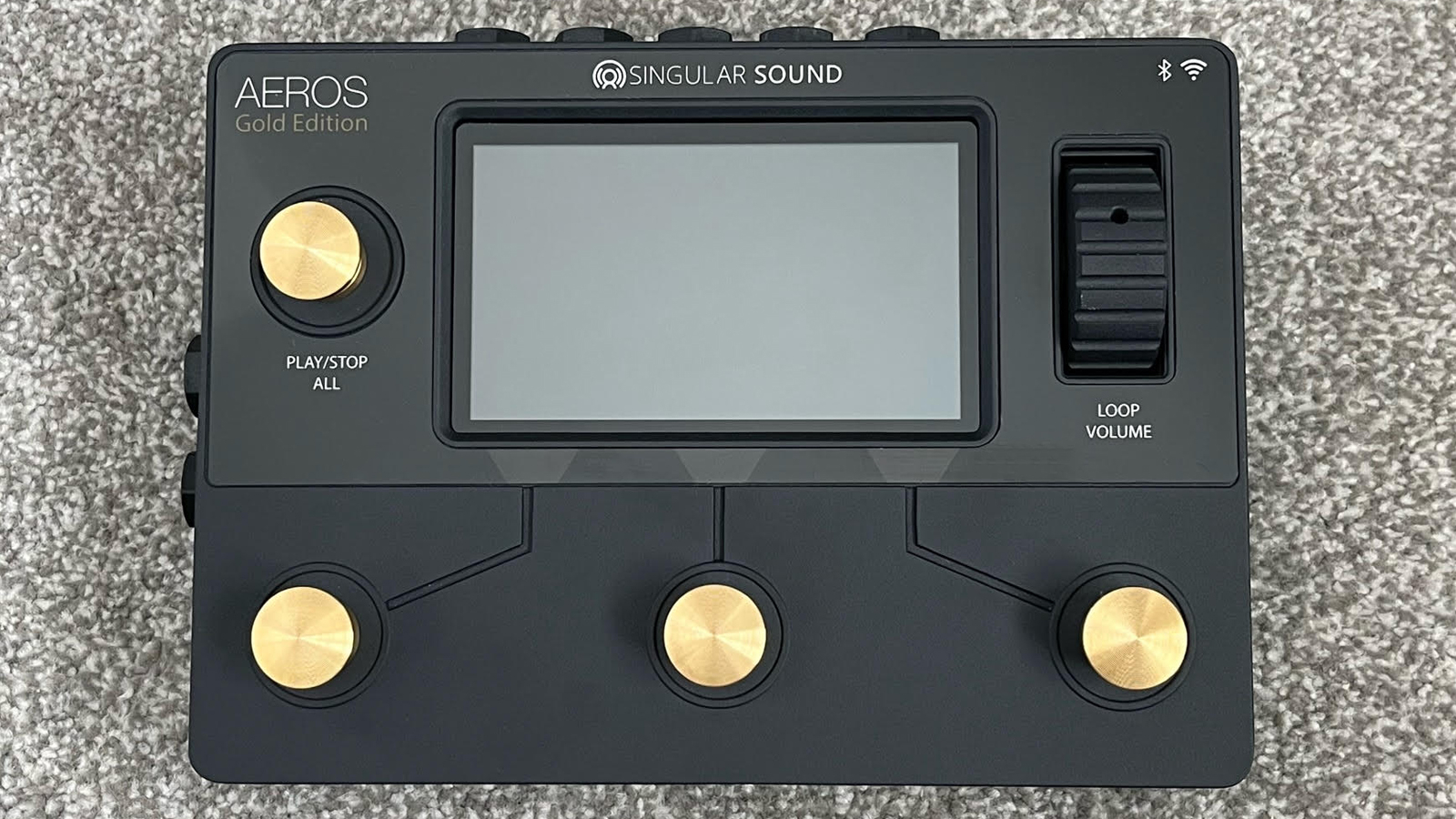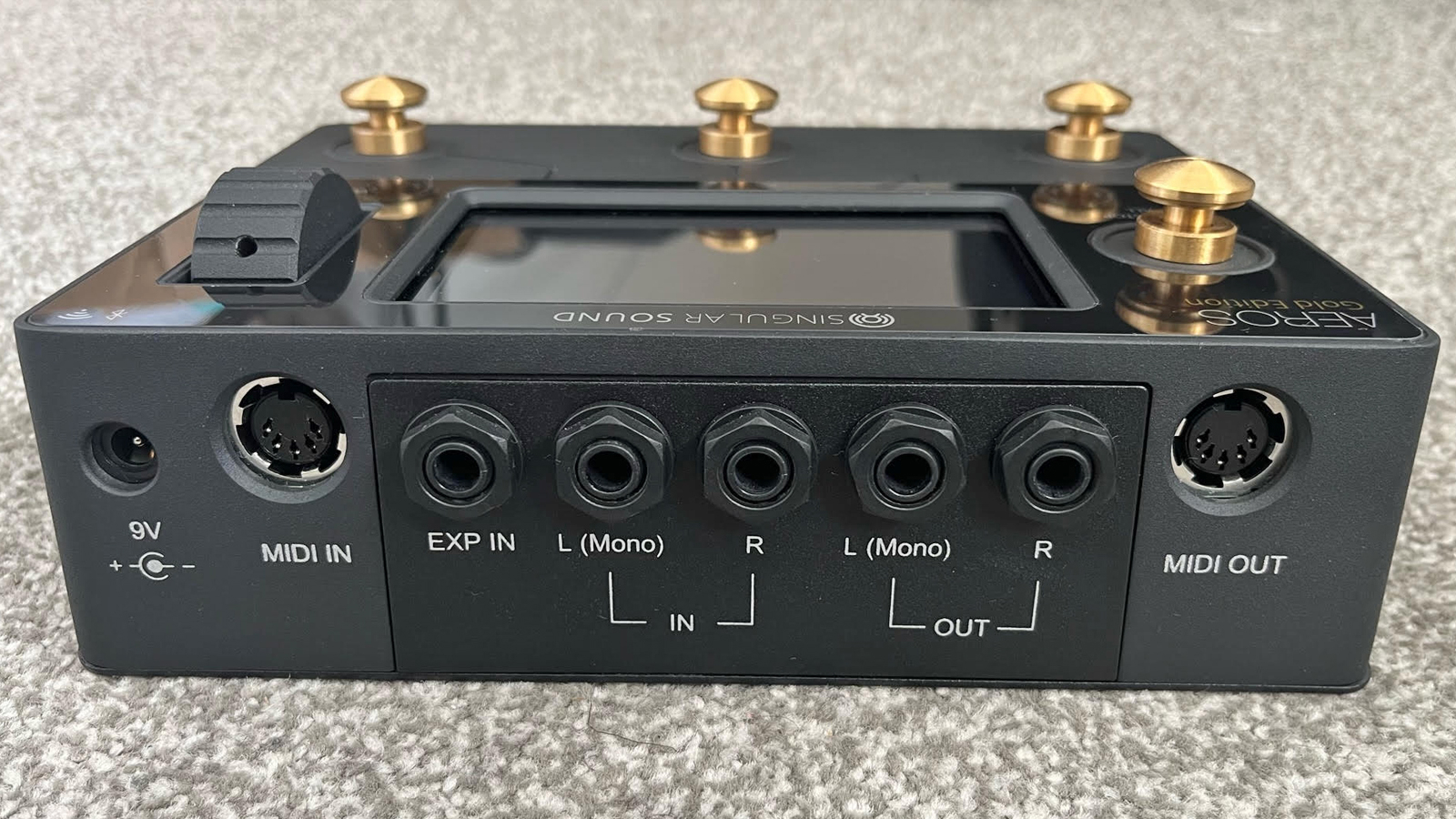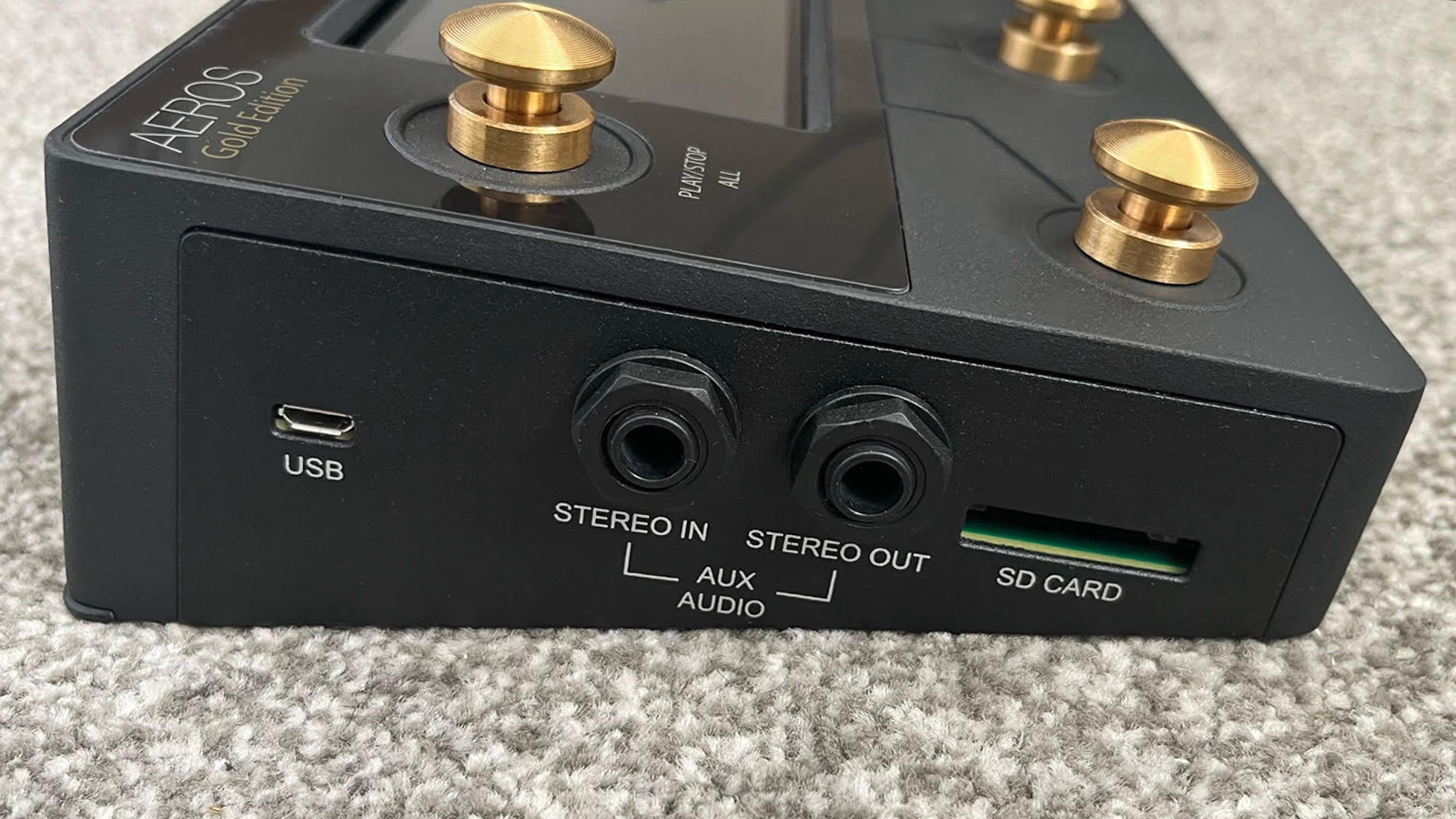Guitar World Verdict
This is an excellent looper pedal and despite its functionality, is relatively easy to use. It does take some getting used to and can be a little daunting at first, but the more time you spend with it, the better it gets and the more you'll be able to do with it. We loved being able to customize all the settings and the routing options make it ideal for pretty much any setup going.
Pros
- +
Two separate modes will suit different players/situations
- +
Easy to use
- +
Quality, sturdy footswitches and wheel
- +
Can personalize how it functions with the settings to suit you
- +
Big screen
- +
Display always lets you know where you are
Cons
- -
Labeled footswitches in 2x2 mode?
- -
A little daunting at first
- -
Metal inputs/outputs might last longer
You can trust Guitar World
The Singular Sound Aeros Looper is a powerful loop pedal that's perfect for live performers or for players that would rather record onto a hardware unit instead of a computer.
Boasting 20 minutes of recording time in mono (less in stereo), unlimited overdubs, a whole host of connectivity options, a very useful touch color screen and two operating modes (2x2 and 6x6), the Aeros Looper is a serious bit of kit, and probably one of the best looper pedals currently on the market.
Upon opening the box, you're greeted with a leaflet that explains how the pedal works. We really liked this, as it's not off-putting like a thick manual can be. It's a single sheet that's laid out well and tells you what the basic functions of the pedal are and how to operate it.

The unit is built well and feels sturdy. It's also fairly light, so if you're trying to reduce the weight and size of your rig, then you're in luck. The metal footswitches feel like they'll withstand a good amount of stamping, and they're also silent, so there are no loud, clicky transitions when you're bringing the dynamics down.
We've not had the unit for years, so we can't say how or if this will affect it, but metal inputs and outputs might have more longevity. The wheel on the side is nice too and works well whether you're using it with your hand or your foot.
What we feel makes the Aeros looper so great is being able to seamlessly transition between different song parts. So, if you're a performer and want to build up your songs live, you can do this easily. In 2x2 mode, you've got two tracks to build up and two song sections. So, if you're getting to grips with looping or you want to lay down some reasonably simple song structures, then this is perfect.

However, if you're performing songs with more separate sections, then 6x6 mode is probably for you. With this, you get six individual tracks per section and six song sections – that's a total of 36 tracks to play with.
In both modes, all tracks have unlimited overdubs, so you might wonder why there's a need for multiple tracks. Firstly, you can create loops of varying lengths to sit on top of each other. So you might loop a base layer that's only four bars long but then have another part that's longer than that. Having separate tracks means you don't have to play your short loop multiple times to get it to the same length as your longest part.
With the Aeros, you can also tweak the volume of your separate tracks. So maybe you've got some chords and a makeshift bassline that you want to be heard above everything else. You can drop the volume of the other tracks using the wheel on the side, so you're always in control.

In 2x2 mode, you've got a footswitch for each track, so you can easily overdub or undo a part. The only thing is, it might be nice if the pedals were labeled up so you immediately knew which track is controlled by which pedal. Though, if they were, then that wouldn't be right for 6x6 mode, as the controls do change slightly.
In 6x6 mode, you've got more tracks to play with but obviously the same number of pedals with which to control them. As a result, this does get a little more complicated, but even still, it's fairly easy to use. Once you've spent an hour or so with it, you'll quickly grasp how both modes work. This shows how user-friendly and intuitive the pedal is.
We really liked how you've got control over pretty much everything, too. There's a comprehensive settings section where you can choose how and when loops change, so if you want the pedal to start recording as soon as you hit it or at the end of a bar/loop, then you can pick whatever you prefer. The same can be said for the stop and overdub functions. Basically, if there's something about how the looper functions that you don't like, chances are – you can change it!

There's a click track on board that you can use if you want (you can even route this out of the auxiliary output so it isn't heard through the amp but instead through another rig), and you can link up external MIDI devices. It links really well with their Beat Buddy pedal, though we didn't have one to try it out with.
You can save directly onto the pedal or via an SD card which expands the memory. It can essentially become a workstation for you to track complex song ideas or even a portable studio if you don't like recording onto a computer, though, of course, you're more limited when it comes to mixing afterwards.
The Aeros Looper can be used pretty much hands-free. The wheel is really useful and has a good amount of resistance to it, so when you're using your foot to move it, you're not going to accidentally change the volume dramatically. You can change volumes of different tracks while you're stood up – there's no bending down to tweak if you don't want. This is great as it gives you control, but realistically, it's not going to be entertaining to watch live. If you're going to want to do this – you'd better learn to do it quickly and efficiently (which is possible) so that the audience isn't watching someone tap dancing, staring at the looper screen.
Specifications
- Price: $629/£599
- Bypass: Digital dry-through
- Loop time: 20 mins mono per track
- Footswitches: 4
- Signal Processing: 32-bit Floating Point
- Sample Rate: 44.1kHz
- Effects: Reverse, Fade In/Out, Loop Decay
- Inputs: 2 x 1/4" (L/mono, R), 1 x 1/4" TRS (Stereo Aux)
- Outputs: 2 x 1/4" (L/mono, R), 1 x 1/4" TRS (Stereo Aux)
- Power: 9v (plug included)
- Contact: Singular Sound
After spending a decade in music retail, I’m now a freelance writer for Guitar World, MusicRadar, Guitar Player and Reverb, specialising in electric and acoustic guitars, bass, and almost anything else you can make a tune with. When my head’s not buried in the best of modern and vintage gear, I run a small company helping musicians with songwriting, production and performance, and I play bass in an alt-rock band.
“The original Jordan Boss Tone was probably used by four out of five garage bands in the late ’60s”: Unpacking the gnarly magic of the Jordan Boss Tone – an actual guitar plug-in that delivers Dan Auerbach-approved fuzz
“This is a powerhouse of a stompbox that manages to keep things simple while offering endless inspiration”: Strymon EC-1 Single Head dTape Echo pedal review












